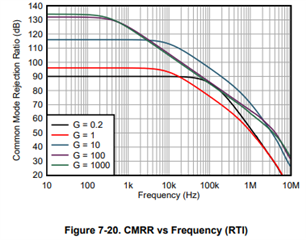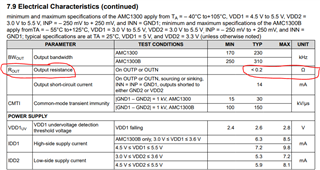Other Parts Discussed in Thread: INA851, AMC1300
Hello.
I am utilizing an isolated error amplifier from Skyworks which has 950kHz bandwidth. There are two problems regarding the device. Data sheet is here: Data Sheet Si8920 Isolated Amplifier for Current Shunt Measurement (skyworksinc.com).
Firstly, the output impedance is 5kOhm. Although they show the device directly driving an ADC input, it is my understanding that the ADC must be driven by a low impedance source. Therefore this would not be suitable unless a large acquisition period or low sampling frequency was implemented.
Secondly, there is a common mode voltage at the output of the amplifier (page 6) of 1.1V typical. I was thinking to interface the isolated amplifier to the ADC with a fully-differential amplifier stage, as recommended in 18-Bit, 1MSPS Data Acquisition Block (DAQ) Optimized for Lowest Distortion and Noise.
However, I am unsure what to set as the common mode voltage of the amplifier. It is usually set to half of the ADC reference voltage, but how do we take into account the common mode voltage at the output of the amplifier, too?
Is it essential to have a buffering stage on the output of this Skyworks amplifier for optimal performance? My signal frequency will be anywhere from 100-300kHz.
Best regards,
JM H.




